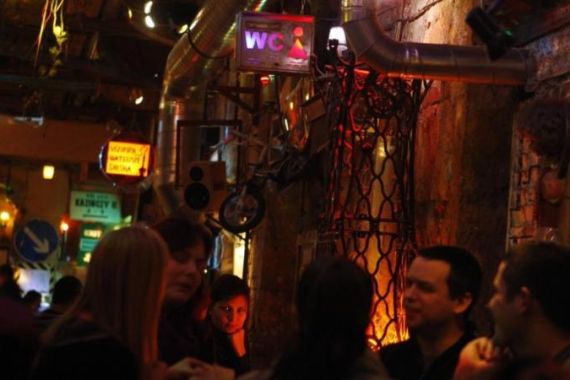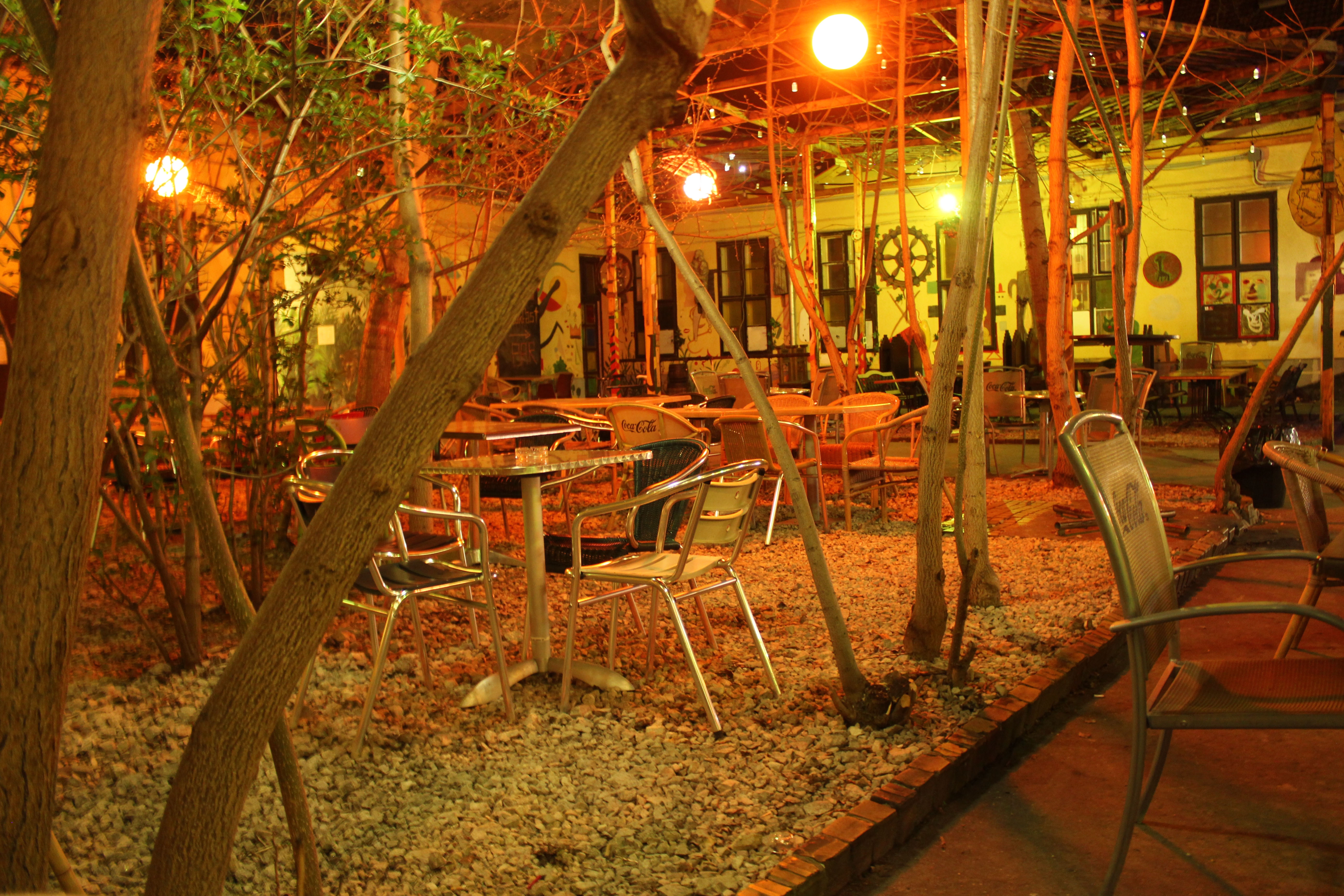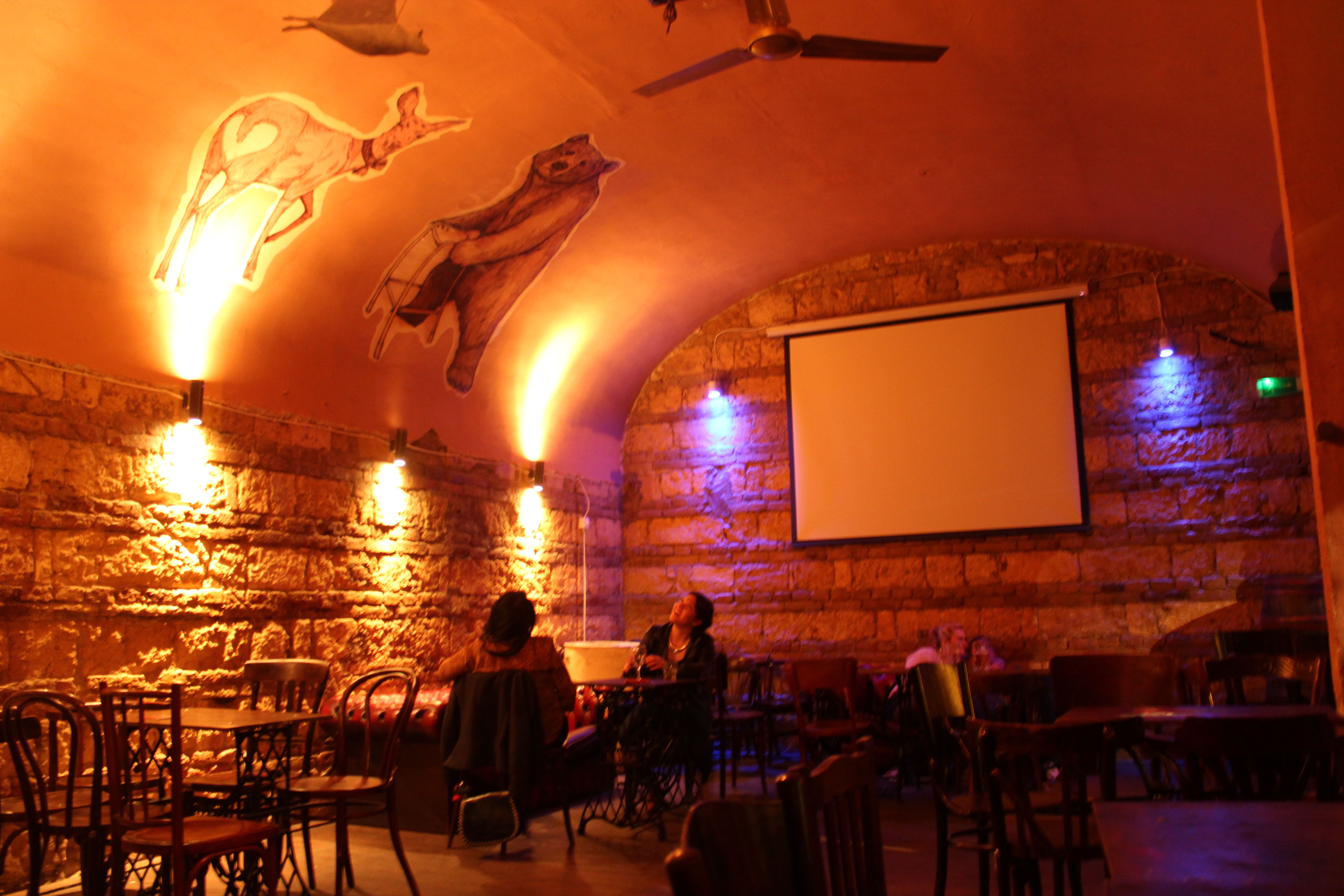Budapest ruin pubs offer peep into the past
Pubs housed in run-down, formerly abandoned buildings attract hipsters looking to party in Hungarian capital.

Budapest, Hungary – On a chilly Saturday night, young party-goers gather inside a two-storey former factory in the heart of Budapest’s entertainment district. Old computer monitors displaying psychedelic patterns line the walls in one room. And in another, two women sit in a bathtub cut in half.
On the wall above, a note reads: “Sorry for your broken leg Rob!” On a wall further away, someone has taken a more philosophical approach, writing a reference to a Dave Matthews Band song lyric: “Here are we on this starry [sic] night and I must say I feel as small as Dust lying down here.” They are among thousands of scribbles on the walls. Not a problem, vandalism is encouraged here.
Keep reading
list of 4 itemsBehind India’s Manipur conflict: A tale of drugs, armed groups and politics
China’s economy beats expectations, growing 5.3 percent in first quarter
Inside the pressures facing Quebec’s billion-dollar maple syrup industry
Welcome to Szimpla Kert, the first and most popular of Budapest’s ruin pubs. These bars, located in run-down, formerly abandoned buildings and often filled with salvaged, retro furniture, are the hottest attractions for hipsters looking to party in the Hungarian capital.
“This was a 200 year old [building],” Barna Vendely, Szimpla’s spokesman, explains.
“It was a [factory]… so they produced bricks and fireplaces here. In the communist era, it was a school furniture factory and [then] it was separated into several flats and there was a time when seven different families lived here together.”
The bar became instantly popular.
“It was like a boom, and it still is,” says Vendely. “It’s a big story and now it’s a part of the national heritage.”
Protecting old buildings
Its success ignited the popularity of ruin pubs. An estimated 30 ruin pubs are now in the city.
Most of the buildings are owned by property developers who often intend to demolish them, but had them rented out to businessmen in the meantime to be turned into bars.
 |
| Grandio, formerly office buildings, was opened in 2010 [Kristina Jovanovski/Al Jazeera] |
Residents fought to protect the buildings and, after the 2008 financial crisis, developers did not want to spend money on demolition, according to the owner of the Grandio ruin pub Andras Rona.
Rona, who also heads a local restaurant trade association, says locals rallied against plans by developers to tear down the building housing Grandio and construct an eight-storey residential building. The poor economic climate has stopped such plans.
“It’s not in imminent danger now,” Rona says of his bar.
Rona says Grandio’s building, a few minutes away from Szimpla, is over a hundred years old. He believes it was first a school but then became the head office of a state-run restaurant association during communism. It was later used for offices of a chocolate company before the current developers bought it.
Rona says what makes these pubs, especially the ones with residential origins, so popular is their casual vibe and the “impression you are at a house party,” a unique draw for a tourist in a foreign country.
“They just provide an atmosphere you wouldn’t have in a normal bar surrounding… it gives you the illusion of being at home.”
‘Bomb explosion’
Some of these bars are so inconspicuous among the derelict apartments and crumbling infrastructure of the city that they are difficult to spot.
Many are situated in the multicultural 7th district in downtown Budapest which used to house the Jewish ghetto during World War II. A significant part of the area is now being gentrified largely thanks to the pubs.
“In the past decade, it’s been developing spontaneously, like a bomb explosion,” the district’s Mayor Zsolt Vattamany says.
According to Vattamany, the booming nightlife in the district has led to increased tax revenue and job creation. The district earns about $1.3m annually in taxes from hotels and hostels in the area, many of which sprung up after the bar scene evolved.
However, along with economic benefits, the nightlife boom has also garnered complaints from residents about late-night noise and waste left behind by party-goers.
District resident and community organiser, Tibor Spitzer, says the neighbourhood is in transition. Many elderly residents in the 7th district came from the countryside in the 1950s, he says, and are now having a hard time adapting to the new “rhythm of the area”.
He is also concerned about what will happen if the pub boom dies down.
“My question is when this thing will not be interesting any longer, when it will be something not that trendy… what will happen after that?,” he says.
New party destination?
Emese Nagy lives on Kazinczy Street where Szimpla and many other bars are located.
She says the pubs have created a special cultural hub in the city, such as by offering free concerts, art exhibitions and farmers’ markets. However, the noise and trash are still major problems for locals.
 |
| Instant was opened in 2008 and is one of the most popular ruin pubs in Budapest [Kristina Jovanovski/Al Jazeera] |
“It’s noisy and they vomit under your balcony,” Nagy says. “It’s terribly annoying, it’s terribly annoying. I have ear plugs.”
The mayor says there is an ongoing debate throughout the country about whether the capital should be seen as a party destination.
Budapest has become popular with young travellers taking advantage of cheap flights with budget airlines.
In March, a survey involving 25 cities by the British Post Office rated Budapest the best value destination for British tourists. The office reported its sales of the Hungarian currency increased by 141 percent from last year.
“There’s some who think it’s a good thing,” Vattamany says of the city’s growing party reputation. “There are rather some who think that maybe we should not necessarily be famous for this. It’s also important that the visitors… still get to know our culture.”
Out of about 3,000 visitors to Szimpla on an average Saturday night, 2,000 will be foreigners, according to Vendely. However, he is unapologetic about catering to tourists.
“We are not nationalist type of persons and we don’t want to [display] a big Hungarian flag here and sell goulash soup… you have to provide something [else] for the tourists.”
Vendely explains that locals are now used to ruin pubs, but for tourists the idea is one rarely seen elsewhere.
Melting pot of cultures
While these bars go through varying levels of renovation, Vendely says part of Szimpla’s draw is that the building is kept close to its origins and still offers a unique, quirky environment.
“It’s kind of a melting pot, you know, for different cultures. Someone came here because of the architecture, the other one came here because you can write on the walls, so it’s different. I think everyone finds their expectations for a single night.”
Nagy says that the link to a bygone era is a large part of what brings people to these venues. While talking to young party-goers about why they liked coming to these pubs, she was told they provided a connection to Hungary’s socialist past which these youth only heard negative things about.
However, when they see memorabilia, such as sofas and kitsch-style cups found in many Hungarian kitchens during socialism, they get a “friendlier” and “softer” impression of the era.
“They get an example through these objects and artworks of the history and of the life of their parents and grandparents,” Nagy says.
“They better understand lots of things they’ve never seen, they never heard really about and [that] they considered something terrible, so it’s a cultural museum.”